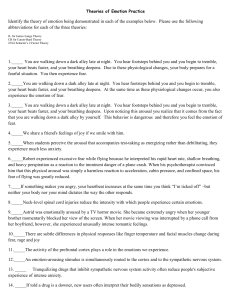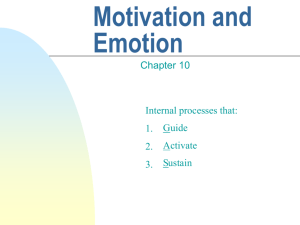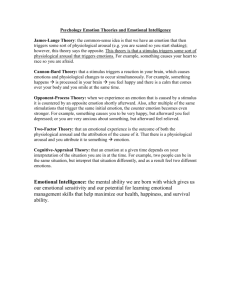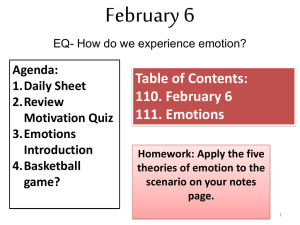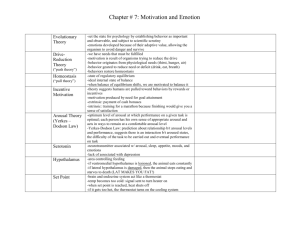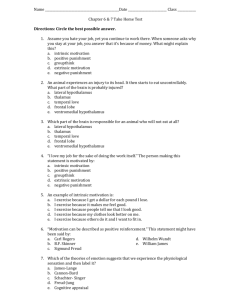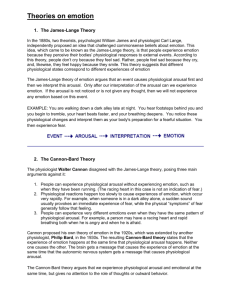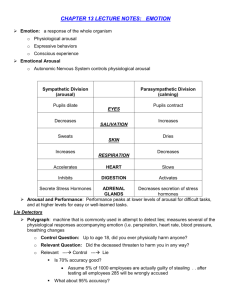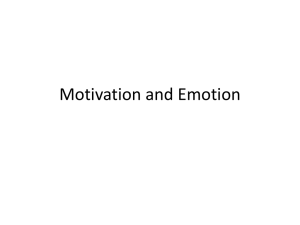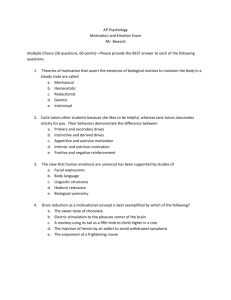Emotions Worksheet II answers
advertisement
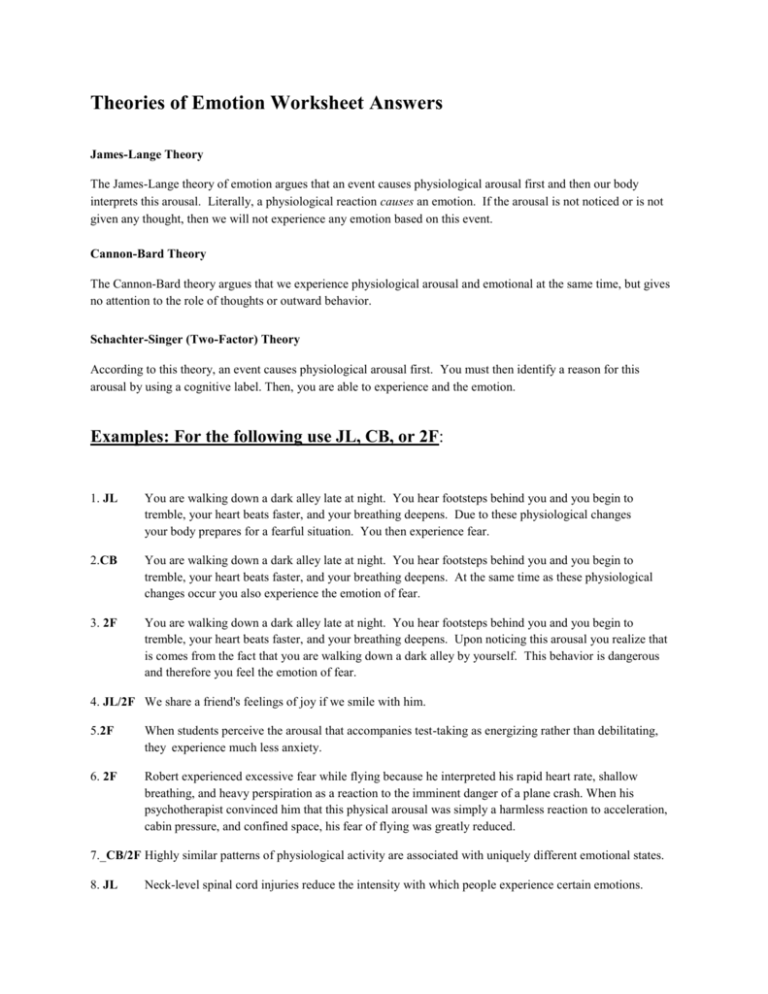
Theories of Emotion Worksheet Answers James-Lange Theory The James-Lange theory of emotion argues that an event causes physiological arousal first and then our body interprets this arousal. Literally, a physiological reaction causes an emotion. If the arousal is not noticed or is not given any thought, then we will not experience any emotion based on this event. Cannon-Bard Theory The Cannon-Bard theory argues that we experience physiological arousal and emotional at the same time, but gives no attention to the role of thoughts or outward behavior. Schachter-Singer (Two-Factor) Theory According to this theory, an event causes physiological arousal first. You must then identify a reason for this arousal by using a cognitive label. Then, you are able to experience and the emotion. Examples: For the following use JL, CB, or 2F: 1. JL You are walking down a dark alley late at night. You hear footsteps behind you and you begin to tremble, your heart beats faster, and your breathing deepens. Due to these physiological changes your body prepares for a fearful situation. You then experience fear. 2.CB You are walking down a dark alley late at night. You hear footsteps behind you and you begin to tremble, your heart beats faster, and your breathing deepens. At the same time as these physiological changes occur you also experience the emotion of fear. 3. 2F You are walking down a dark alley late at night. You hear footsteps behind you and you begin to tremble, your heart beats faster, and your breathing deepens. Upon noticing this arousal you realize that is comes from the fact that you are walking down a dark alley by yourself. This behavior is dangerous and therefore you feel the emotion of fear. 4. JL/2F We share a friend's feelings of joy if we smile with him. 5.2F When students perceive the arousal that accompanies test-taking as energizing rather than debilitating, they experience much less anxiety. 6. 2F Robert experienced excessive fear while flying because he interpreted his rapid heart rate, shallow breathing, and heavy perspiration as a reaction to the imminent danger of a plane crash. When his psychotherapist convinced him that this physical arousal was simply a harmless reaction to acceleration, cabin pressure, and confined space, his fear of flying was greatly reduced. 7._CB/2F Highly similar patterns of physiological activity are associated with uniquely different emotional states. 8. JL Neck-level spinal cord injuries reduce the intensity with which people experience certain emotions. 9.2F Astrid was emotionally aroused by a TV horror movie. She became extremely angry when her younger brother momentarily blocked her view of the screen. When her movie viewing was interrupted by a phone call from her boyfriend, however, she experienced unusually intense romantic feelings. 10. JL There are subtle differences in physical responses like finger temperature and facial muscles change during fear, rage and joy 11. 2F The arousal that lingers after an intense argument may intensify sexual passion. 12. 2F The cognitive activity of the cortex plays a role in the emotions we experience. 13. CB An emotion-arousing stimulus is simultaneously routed to the cortex and to the sympathetic nervous system. 14. JL Tranquilizing drugs that inhibit sympathetic nervous system activity often reduce people's subjective experience of intense anxiety. 15. JL Amygdala shows differences in activation during emotions of anger and fear. 16. 2F Arousal from a soccer match can fuel anger, which descends into rioting 17. JL Activity of left hemisphere (happy) is different from right (depressed) in emotions.
